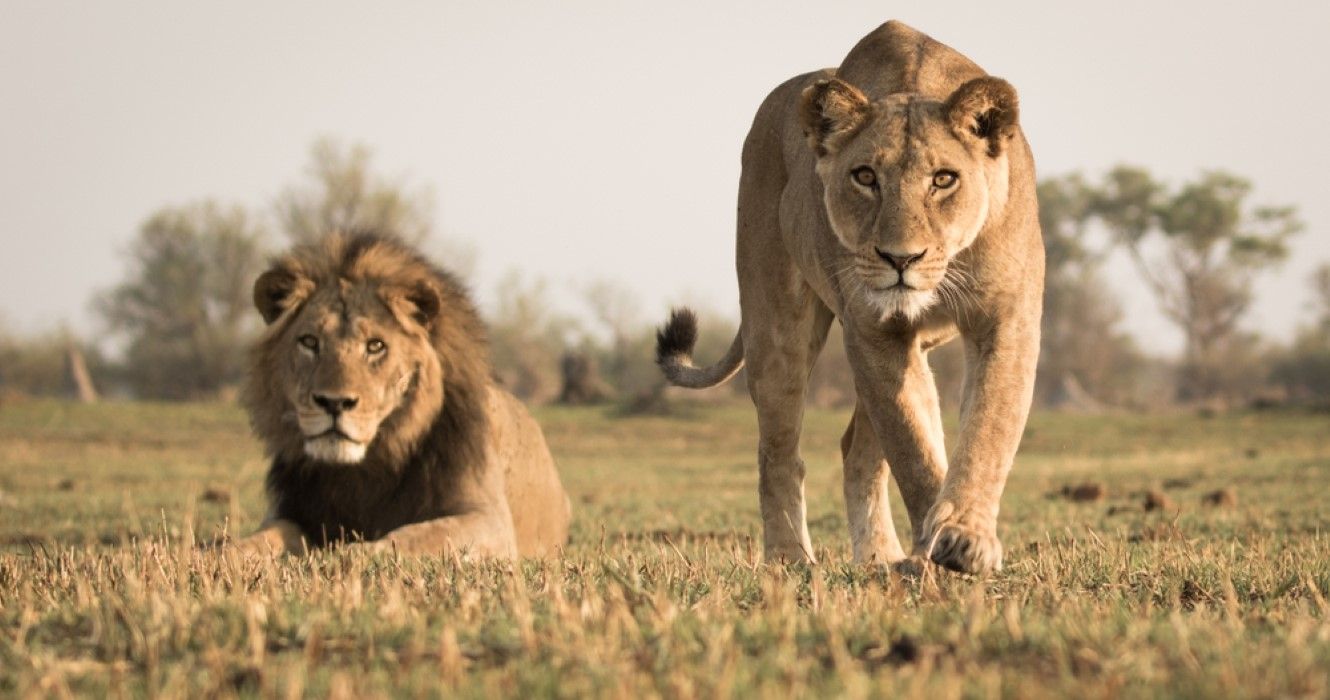With numerous trails all over the world, from easy to difficult, and extremely long ones, hiking is one exciting activity people do all the time. Like many other outdoor activities, hiking also comes with its challenges. From getting lost on the trail to bad weather experiences and sometimes dangerous wildlife encounters. Wildlife usually stays away from humans as much as possible, and humans are also advised to respect their territory, but in case one runs into them unexpectedly, one must know how to react to avoid any conflict. For those heading to areas with abundant wildlife, here’s what to do when faced with wildlife.
10 Never Feed Wildlife
There’s no doubt that humans have a soft spot for wildlife, especially those cute ones like squirrels. But it's never a good idea to feed these animals, no matter how strong the temptation is. Feeding wildlife can make them rely on humans to feed. Even if the first person to feed them escapes the danger, it puts others in danger as the wildlife will be moved to always meet more humans to get food. It’s not a good thing to be approached by a hungry animal for food, as it can put both parties in danger.
9 Do Not Take Wildlife By Surprise
Sneaking and scaring animals might sound like fun things to do, but the excitement can immediately turn sour and become a dangerous situation. This is because wildlife can go into defense mode when startled. To avoid startling animals, it is advisable to make some kind of noise while hiking. This will alert the animals of approaching humans, which will make them most likely to go deeper into the woods to avoid being seen by humans.
8 Do Not Get Too Close
It is best to watch wildlife from afar. Unlike pests that can be patted on the back or hugged, it will be a foolish idea to try to pat a bear on its fluffy back or touch a moose. Such up-close actions can result in a confrontation that might end badly for one or both parties. A general rule of thumb is to stay at least 100 yards away from aggressive animals like moose or bears and at least 25 yards from other less aggressive wildlife.
7 Remain Calm
The signs that wildlife will take to attack in most cases is if one loses their cool when faced with the animal. In such situations, one should try as much as possible to remain calm and relaxed. This, in a way, tells the prey that they’re not faced with a threat. While remaining calm, one can slowly back away to get away from there.
6 Never Turn Your Back To Wildlife (Especially Predators)
The instinct of predators is to attack when a person turns their back. This is especially true for mountain lions and other cats. When faced with such danger, it is best to slowly back off without completely making a 180-degree turn to run away. Such animals also usually stalk people from behind, so hikers should also occasionally check behind to ensure nothing is stalking them from behind.
5 Do Not Threaten Wildlife
Most animals will try their best to stay away from humans even when faced with them. When faced with wildlife, one should not try to be a hero by threatening or attacking animals, as they will have no choice but to defend themselves when they feel threatened. In situations when one is faced with an animal, one should not be aggressive towards them as this can increase their provocation.
4 Use Pepper Spray Or Bear Spray
In areas where predators like bears and mountain lions are especially rampant, hikers are advised to bring along pepper spray in case of a bear encounter. Carrying pepper spray does not mean one should go looking for an animal to pepper spray. One should only use this as a defensive weapon if the situation gets worse or if the animal has become too much of a threat. Remember, pepper spray must be used precisely as it can cause harm to the hiker as well if not properly used. Once pepper spray has been unleashed on the aggressive animal, it is best to get out of the area as quickly as possible to avoid a second confrontation.
3 Be Extra Careful When You Encounter A Mother With Her Babies
Like humans, most animals are generally more dangerous when they have young ones to protect. When faced with an animal with young ones, try as much as possible not to get noticed and stay as far away as possible. When one crosses paths with them, it’s important not to stand between the mother and her babies to avoid being a target.
2 Research On The Types Of Wildlife In The Area Before Visiting
While it is important to know what to do when faced with wildlife, one has to know the types of wildlife in the area before visiting. This information will help hikers prepare for the types of encounters to expect, so it doesn’t take them by surprise.
1 Sometimes One Might Have To Be The Aggressor
Animals such as mountain lions and wolves are hard to fend off, except the hiker scares off the animal by becoming the aggressor. To do this, stand tall and make loud noises while throwing objects at them to create fear. This should only be done in a worst-case scenario when one has tried to stay away from them as much as possible.

